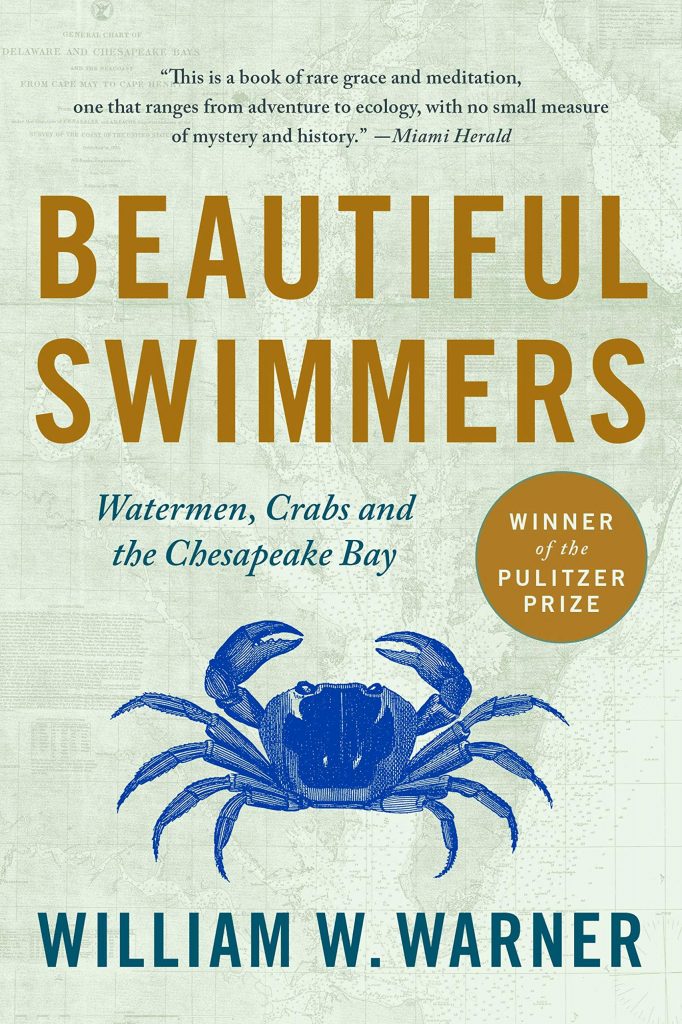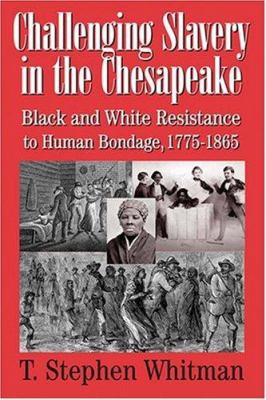by Lisa Greenhouse, Librarian
Working from home has given me a chance to break open some Maryland history titles on my bookshelf. The Pulitzer Prize-winning Beautiful Swimmers: Watermen, Crabs and the Chesapeake Bay by William W. Warner was first published by Little, Brown & Co. in 1976. Warner was a biologist with the Smithsonian Institution when he wrote about the interdependent biological and cultural ecosystems of the Chesapeake watershed. The reader learns about the life cycle of the blue crab — which is way more fascinating than one might expect — as well as the lives and folkways of the watermen, who depend on it for a living.

by William W. Warner
Book
As a participant observer, Warner set out before dawn on the boats of skilled watermen to watch and help as they emptied crab pots, scraped the grassy shoals for peelers, dredged for sooks, netted crabs on trot lines, and captured herring and menhaden in pound nets. Warner developed lasting relationships with these men. He wrote with sensitivity and a deep respect for their intimate knowledge of the Bay, knowledge which often accorded with that of the scientists who studied the Chesapeake.
The book was written at a time when ecological awareness was beginning to reveal how imperiled the Chesapeake was but before the lifestyles of those dependent on it had become anachronistic. It was a time when there was still a skipjack fleet that dredged oysters under sail in the winter and when many watermen’s wives were still working in the packing houses, though some had begun to leave for jobs in chain retail.
Full of careful observation, humor, lore, and history, today’s reader will come away with an appreciation of a local way of life that was once vibrant but now hangs on by the thinnest blade of eelgrass.

by Stephen T. Whitman
Book
Challenging Slavery in the Chesapeake: Black and White Resistance to Human Bondage, 1775-1865 (2007, Maryland Historical Society) by T. Stephen Whitman looks at a different aspect of regional history. The Mid-Atlantic states had varying relationships to slavery and resistance. For example, while the Pennsylvania line and freedom didn’t seem far off for slaves from Delaware and Maryland, Virginia’s remoteness from that line played a role in the choice of rebellion over flight. In Maryland and Delaware, self-purchase agreements and manumissions after a term of slavery were more common.
Whitman covers the Revolutionary War and the War of 1812, when many slaves fled behind British lines and others fought for the Americans, hoping to be rewarded with freedom. Abolitionists, Quakers, the black Methodist church, freedom petitions, slave rebellions, the Underground Railroad, and colonization are all discussed at length. Whitman’s book closes with the period leading up to the Civil War, when the Fugitive Slave Law helped to radicalize the north, and ends with that conflict.
That the Genius of Universal Emancipation, an important early abolitionist newspaper, was published out of Baltimore and that its co-editor William Lloyd Garrison spent time in a Baltimore jail are among the interesting locally-tinged facts presented by Whitman. Anti-slavery activists, from Maryland or operating there, such as Daniel Coker, Frederick Douglass, Harriet Tubman, and Jarena Lee are covered. Both of these books are held by the Enoch Pratt Free Library Maryland Department.